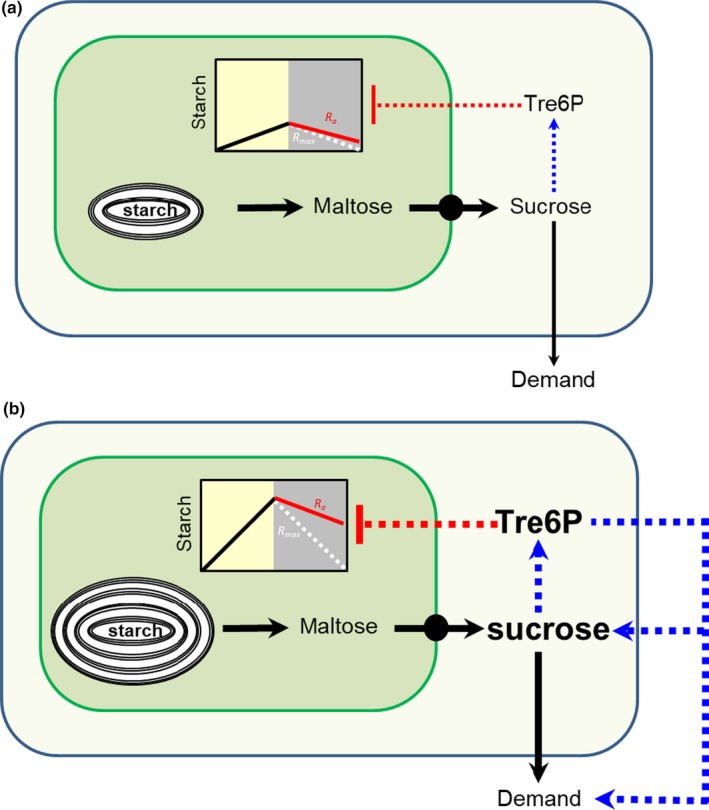Figure 8.

Schematic model to illustrate the inhibitory effect of Tre6P on night‐time starch mobilization in C‐replete and C‐limiting scenarios. In conditions where a low amount of starch is available at dusk, such as in short photoperiod or low irradiance, the clock enforces a low rate of starch mobilization during the night, leading to low levels of sucrose and Tre6P. Tre6P only slightly depresses the relative rate of starch mobilization (R r) below that permitted by the clock (R max), and this small depression is further attenuated by the compensatory increase modeled in Supporting Information Figure S7. In conditions where ample starch is available at dusk and starch mobilization supplies more C than can be consumed for metabolism, maintenance and growth, sucrose will increase. The resulting increase in Tre6P will restrict starch mobilization leading to incomplete utilization of starch. High Tre6P (and other C‐signals derived from high sucrose and other sugars) will also act to increase the rate of C utilization. The extent to which starch mobilization is slowed down will depend on the balance between negative feedback of starch mobilization by Tre6P and feedforward signaling by Tre6P and other C‐signals to increase C utilization
